External cardiac massage, also known as chest compression or closed-chest cardiac massage, is a medical procedure used to restore circulation and cardiac output when the heart has stopped beating. It is a medical emergency procedure used to restore the heart’s normal rhythm and is typically only used when other treatments or resuscitation techniques such as manual chest compression, electric shock or medications have failed. This article will explain what external cardiac massage is, its benefits and risks, and when it should be used.
Contents
Definition of External Cardiac Massage
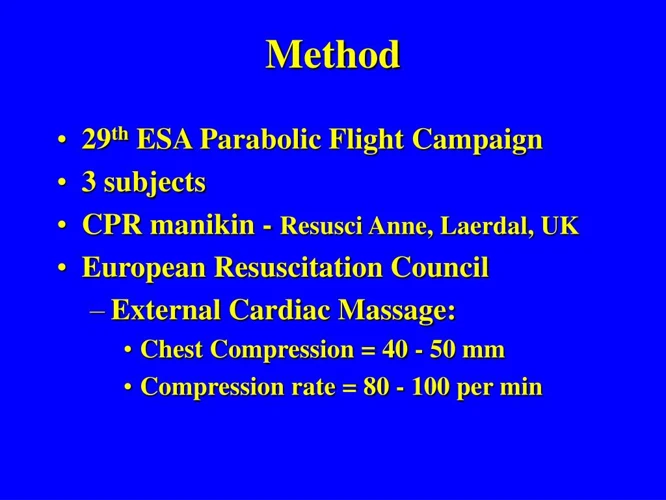
External Cardiac Massage (ECM) is an emergency procedure that is used to manually pump blood from the heart to the body. The procedure is done by pressing down on the chest and releasing the pressure in rapid succession, creating a squeezing motion that helps to push blood from the heart to the rest of the body. ECM is used in cases of cardiac arrest or other life-threatening conditions when the heart is not functioning properly.
How Is ECM Performed?
During ECM, the person administering the procedure will press down firmly on the chest, then release the pressure. This squeezing and releasing motion helps to push blood from the heart to the rest of the body. The pressure should be applied with enough force to compress the chest wall, but not so much as to cause pain.
What Are the Benefits and Risks of ECM?
ECM can be an effective tool in an emergency situation, as it can help to restore circulation and provide oxygen to the brain and other organs. However, it also has some risks. If the pressure is not applied correctly, it can cause injury to the ribs, lungs, and other organs. Additionally, ECM can cause further damage to the heart if it is not done correctly.
Who Should Perform ECM?
ECM should only be performed by a trained professional. This could include a doctor, nurse, or other medical personnel. ECM should not be attempted by anyone without the proper training and equipment.
Benefits of External Cardiac Massage
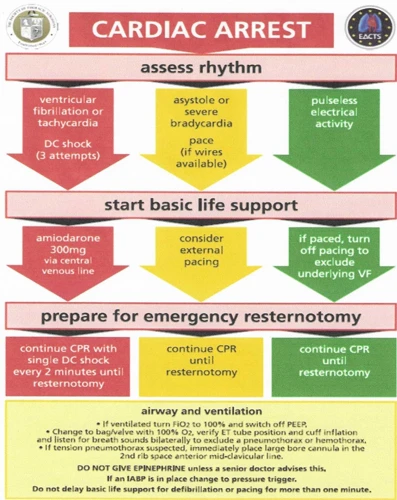
- Restoration of Normal Heart Rhythm: External cardiac massage can be used to restore a normal heart rhythm in certain cases of cardiac arrest.
- Improvement in Blood Circulation: This procedure can help improve the circulation of blood in the heart, allowing for better delivery of oxygen and nutrients to the surrounding tissues.
- Reduced Risk of Complications: External cardiac massage can reduce the risk of complications associated with cardiac arrest, such as arrhythmias and cardiac failure.
- Shorter Recovery Time: External cardiac massage can help to reduce the recovery time of patients who have suffered cardiac arrest.
- Pain Relief: This procedure can provide relief from pain associated with cardiac arrest.
Risks of External Cardiac Massage
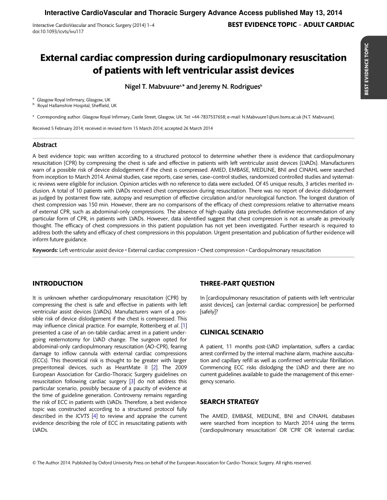
- External cardiac massage is associated with a range of risks, including but not limited to:
- Damage to the heart: When external cardiac massage is performed, the chest wall is compressed strongly against the heart. This can cause damage to the heart muscle, as well as to the heart valves.
- Infection: External cardiac massage is associated with an increased risk of infection due to the fact that open areas of skin may be exposed to bacteria.
- Injury to other organs: The force of external cardiac massage can cause injury to other organs, such as the lungs, spleen, and liver.
- Arrhythmias: External cardiac massage can cause a variety of arrhythmias, or irregular heartbeats.
- Blood clots: External cardiac massage can cause blood clots to form in the heart, which can be life-threatening if not treated promptly.
- In order to minimize the risks of external cardiac massage, it is important to ensure that the procedure is performed by a qualified and experienced medical professional.
Techniques Used in External Cardiac Massage
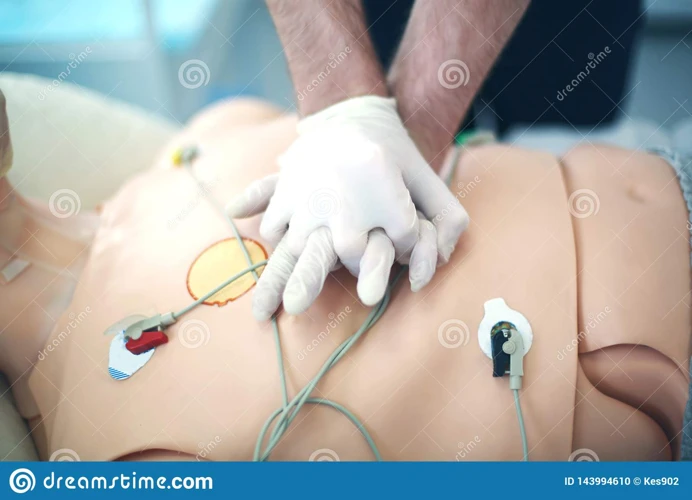
- Direct compression: This technique involves compressing the heart to push blood out of the heart and into the rest of the body.
- Alternate compression: This technique involves alternating between compressing the heart and allowing it to relax, which helps push more blood out of the heart.
- Two-handed technique: This technique involves using both hands to compress the heart and push more blood out.
- CPR: This technique involves performing chest compressions and providing breaths that can help push more blood out of the heart and into the body.
- Cardiopulmonary bypass: This technique involves connecting the heart and lungs to a machine that takes over the functions of the heart and lungs, allowing the heart to rest and push more blood out of the heart.
External cardiac massage is an emergency procedure that is used to restore blood flow to the heart. It is used when the heart stops beating or is beating too weakly to pump blood. The technique involves manually compressing the heart to push blood out of the heart and into the rest of the body. Different techniques are used to perform external cardiac massage, including direct compression, alternate compression, two-handed technique, CPR, and cardiopulmonary bypass.
Direct compression involves compressing the heart to push blood out of the heart and into the rest of the body. Alternate compression involves alternating between compressing the heart and allowing it to relax, which helps push more blood out of the heart. The two-handed technique involves using both hands to compress the heart and push more blood out. CPR involves performing chest compressions and providing breaths that can help push more blood out of the heart and into the body. Finally, cardiopulmonary bypass involves connecting the heart and lungs to a machine that takes over the functions of the heart and lungs, allowing the heart to rest and push more blood out of the heart.
Indications for External Cardiac Massage
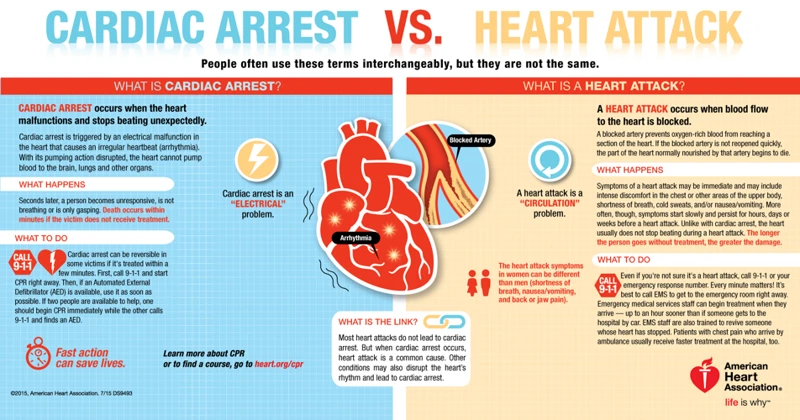
- Cardiac arrest: External cardiac massage is indicated in cases of cardiac arrest as it can help restore the heart rhythm, increase blood circulation and restore vital organ function.
- Compression: External cardiac massage helps to compress the heart and increase its output. This allows the heart to pump more blood into the body, increasing the amount of oxygen and nutrients that the body can absorb.
- Shock: External cardiac massage may be used in cases of shock to help restore cardiac output and improve circulation. This can help to reduce the risk of organ damage and even death.
- Heart failure: External cardiac massage can be used to help improve cardiac output and reduce the symptoms associated with heart failure, such as shortness of breath, fatigue and chest pain.
- Cardiogenic shock: External cardiac massage is indicated in cases of cardiogenic shock, which occurs when the heart is unable to pump enough blood to meet the body’s needs.
How to Perform External Cardiac Massage
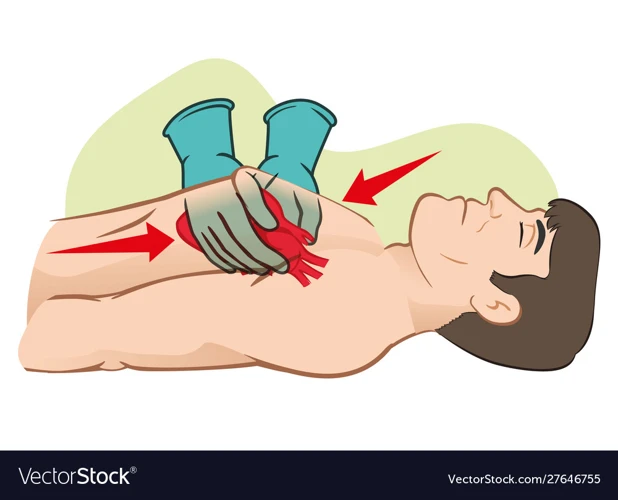
1. Prepare the Patient
The patient should be on a flat surface and should be undressed from the waist up. Place a pillow under the patient’s shoulders to elevate their chest and head. Make sure the patient is connected to a cardiac monitor and a defibrillator.
2. Assess the Patient
Check for signs of life, such as a pulse and breathing. If the patient does not have a pulse, then external cardiac massage can be performed.
3. Start External Cardiac Massage
| Steps | Details |
|---|---|
| Position the hands | Place your hands flat on the chest, just to the side of the patient’s sternum |
| Compress the chest | Press down firmly with your hands, compressing the chest by about 5 cm (2 inches) |
| Release the chest | Allow the chest to return to its starting position |
| Repeat | Perform the compressions at a rate of 100 per minute |
4. Monitor the Patient
Continue to check for signs of life, such as a pulse and breathing. If the patient regains a pulse and breathing, then external cardiac massage can be stopped.
5. End External Cardiac Massage
If the patient does not regain a pulse and breathing, then external cardiac massage should be stopped.
Contraindications for External Cardiac Massage

External cardiac massage should not be performed in the following conditions:
- When the patient is in ventricular fibrillation (VF)
- When the patient is in ventricular tachycardia (VT)
- When the patient has had a recent myocardial infarction (MI)
- When the patient has an aortic aneurysm
- When the patient has a pneumothorax or other chest trauma
- When the patient has had a recent chest surgery
- When the patient has an open wound over the chest
- When the patient has an implanted pacemaker
- When the patient has a known allergic reaction to the procedure
External cardiac massage can also be contraindicated for certain medical conditions, such as heart failure and arrhythmias. It should also not be performed if the patient is too ill to tolerate the procedure, is taking certain medications, or if there is an underlying structural problem with the heart.
Complications of External Cardiac Massage
External cardiac massage is generally considered a safe procedure when used properly and by a medical professional, however, there are certain risks and complications associated with it. Potential complications of external cardiac massage include:
Hemorrhage: External cardiac massage can cause a dangerous amount of bleeding, especially if the rib cage is not adequately protected.
Damage to Internal Organs: The forceful pushing and pulling movements of external cardiac massage can cause damage to the lungs, liver, spleen, and other internal organs.
Fractured Ribs: It is possible for the ribs to be fractured or broken during external cardiac massage.
Damage to the Heart: External cardiac massage can cause the heart to become damaged or irritated, which can lead to further complications.
Arrhythmia: External cardiac massage can cause an irregular heartbeat or arrhythmia, which can be dangerous and require immediate medical attention.
Infection: The procedure carries the risk of infection, especially if the area is not properly sanitized prior to performing the procedure.
External cardiac massage can be an effective procedure in certain medical emergencies, but it is important to be aware of the potential risks and complications.
Frequently Asked Questions
What Are the Risks Associated with External Cardiac Massage?
Risks associated with external cardiac massage include:
- Risk of trauma to underlying organs and tissues
- Risk of cardiac arrest in patients with underlying heart disease
- Risk of air embolism
- Risk of infection
- Risk of arrhythmia or cardiac dysrhythmia
External cardiac massage is a life-saving emergency procedure that can be used in cardiac arrest patients. However, it is important to understand the potential risks associated with this procedure and weigh them against the potential benefits. The most common risks include trauma to underlying organs and tissues, air embolism, infection, and arrhythmia or cardiac dysrhythmia.
What are the Benefits of External Cardiac Massage?
External cardiac massage is a procedure used to help restart a heart that has gone into cardiac arrest. It is also used to restore blood flow when the heart isn’t circulating blood throughout the body properly.
- Provide circulation: External cardiac massage helps restore the circulation of blood throughout the body by applying pressure to the chest wall. This helps to get the heart pumping and restore normal circulation.
- Restore oxygen levels: External cardiac massage helps to restore oxygen levels in the body. When the heart is not able to pump enough oxygenated blood to the body, external cardiac massage helps to oxygenate the blood and restore oxygen levels.
- Restore normal heart rhythm: External cardiac massage helps to restore the normal heart rhythm. This helps to ensure that the heart is beating at a steady rate and not too fast or too slow.
- Restore blood pressure: External cardiac massage helps to restore the blood pressure by increasing the amount of blood that the heart pumps. This helps to ensure that the blood pressure is not too high or too low.
- Reduce the risk of long-term complications: External cardiac massage helps to reduce the risk of long-term complications such as stroke and heart failure. The procedure helps to reduce the risk of these complications by helping to restore the normal functioning of the heart.
Is External Cardiac Massage a Safe Procedure?
External cardiac massage is a life-saving procedure that can help restore circulation and heartbeat in the case of cardiac arrest. It is a safe procedure with minimal risks, however, it is only used as a last resort in emergency situations. It can cause complications such as trauma to the chest, broken ribs, or cardiac perforation. While these risks are present, they are usually outweighed by the potential benefits. External cardiac massage should only be performed by a trained medical professional.
How long does external cardiac massage usually last?
External cardiac massage is usually a short-term procedure, lasting anywhere from 1 to 5 minutes. During this time, a doctor or other medical professional will use their hands to repeatedly compress the chest and heart to restore blood circulation.
Benefits of External Cardiac Massage
- Restores blood circulation to the heart
- Provides oxygen to the heart to improve cardiac function
- Stimulates the heart to beat on its own
- Reduces the risk of cardiac arrest
Risks of External Cardiac Massage
- Can cause damage to the chest and heart muscles
- Can cause excessive bleeding due to broken blood vessels
- Can damage the ribs or other internal organs
- Can cause cardiac arrhythmia
Who is eligible for External Cardiac Massage?
- Patients who are in cardiac arrest.
- Patients who have a low heart rate and blood pressure.
- Patients who are not responding to CPR.
- Patients who are in shock.
- Patients with a weakened heart muscle.
- Patients who have suffered a heart attack.
Conclusion
External cardiac massage is an emergency procedure that can help save a life in certain situations. While there are some risks associated with the procedure, it can be a lifesaving measure in cardiac arrest. It is important for healthcare professionals to be familiar with the technique of external cardiac massage and understand the benefits and risks of the procedure.

